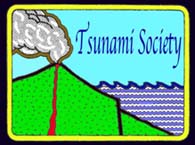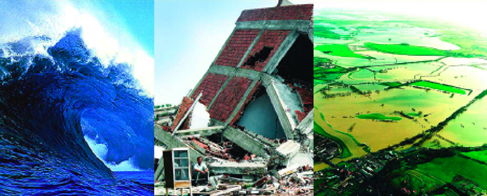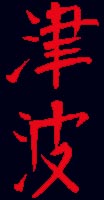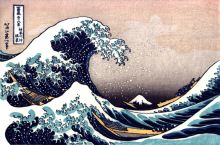..........................................................
ABSTRACTS
for Volume 32, No. 3
ABSTRACTS for Vol 32, No. 3, 2013
Complete Journal - July 2013 - STHVol32N3Y2013.pdf( 14.4 MB ) Compressed Version (2.1 MB) 
NUMERICAL MODEL STUDY OF TSUNAMI GENERATED BY POTENTIAL EARTHQUAKE WITHIN THE KOMANDORSKY SEISMIC GAP IN THE WESTERN ALEUTIAN ISLAND ARC (9.1MB) Compressed (967kb)
R. Kh. Mazova - Nizhny Novgorod State Technical Institute, Nizhny Novgorod, RUSSIA
B. V. Baranov -P.P. Shirshov Institute of Oceanology RAS, Moscow, RUSSIA
L. I. Lobkovsky - P.P. Shirshov Institute of Oceanology RAS, Moscow, RUSSIA
N. A. Baranova - Nizhny Novgorod State Technical Institute, Nizhny Novgorod, RUSSIA
K. A. Dozorova - P.P. Shirshov Institute of Oceanology RAS, Moscow, RUSSIA
O. N. Chaykina -P.P. Shirshov Institute of Oceanology RAS, Moscow, RUSSIA
ABSTRACT
The Komandorsky seismic gap has distinctive boundaries and a length of 650 km. Its period of “seismic silence” comes close to the maximum recurrence interval for great earthquakes in the Aleutian Island Arc - the stress concentration here probably having reached the critical value. So, estimation of possible earthquake and tsunami characteristics within this gap becomes a significant problem. The closest analog of a similar gap is the area where the 2004 Sumatra-Andaman catastrophic event occurred. Thus, for the present study we used the same modeling scheme as we used for that event. It was assumed that a source length of 650 km, consisting of 9 blocks, and an earthquake with a moment magnitude MW=8.5. Several block motion scenarios were considered. The tsunami generation and propagation in the Pacific Ocean and the possible wave characteristics on near and far-field coasts were estimated. Modeling of such an event showed that the wave heights on different Pacific coasts will vary from 3 to 9 meters. A tsunami wave with a 9-meter height is capable in causing significant loss of human life and economic damage.
Keywords: Komandorsky seismic gap, seismic forecast, earthquake source, tsunami source, tsunami modeling
Vol. 32, No. 3, page 131 (2013)
GEOLOGICAL INVESTIGATION OF PALAEOTSUNAMIS IN THE SAMOAN ISLANDS: INTERIM REPORT AND RESEARCH DIRECTIONS (4.2MB) Compressed (410kb)
Shaun Williams - Department of Geological Sciences and Natural Hazards Research Centre, University of Canterbury, Christchurch, NEW ZEALAND
James Goff - School of Biological, Earth, and Environmental Sciences, University of New South Wales, Sydney, NSW, AUSTRALIA
Johnny Ah Kau, Faigame Sale - Geophysics Section, Meteorology Division, Ministry of Natural Resources and Environment, Government of Samoa, Apia, SAMOA
Catherine Chagué-Goff - School of Biological, Earth, and Environmental Sciences, University of New South Wales, Sydney, NSW, Australia And Australian Nuclear Science and Technology Organisation, Kirrawee, NSW, AUSTRALIA
Tim Davies - Department of Geological Sciences and Natural Hazards Research Centre, University of Canterbury, Christchurch, NEW ZEALAND
ABSTRACT
The September 29, 2009 Samoa Tsunami provided the opportunity to sample the sediments deposited in the Samoan Islands landscape by the tsunami. Analysing the characteristics of the sediment deposits using an established suite of diagnostic criteria, and assessing how they differ from cyclone deposits enables the identification and dating of similar events in the geologic record. This helps to better understand the long-term frequency and likely magnitude of these events. Here we report on a pilot palaeotsunami field-sampling investigation carried out in 2010 at selected sites on Upolu and Savaii Islands in the Independent State of Samoa, and on Ta’u Island in American Samoa. We present empirical stratigraphic data for the investigated sites, and we demonstrate the existence of high energy marine inundation deposits at some of these sites which were laid down by past tsunamis and/or cyclones. We review and discuss the analytical outcomes, as well as summarise the overarching directions of this research. We propose that there is a need for this study to continue and for such studies to be carried out in other islands in the Pacific. By doing this, we can build on the sparse palaeotsunami database in the region, thereby helping to improve our understanding of the long-term frequency, impact distribution, and likely magnitude of these events. Further, we can start assessing their likely sources and the long-term risk these hazards pose to coastal cities and communities in the Pacific.
Vol. 32, No. 3, page 156 (2013)
CHAOS THEORY AND THE ROLE OF EXPERT ANALYSIS AS A PERIODIC ATTRACTOR DURING THE 2004 INDIAN OCEAN TSUNAMI
Matthew O’Lemmon – O'Lemmon & Associates, San Bernardino, California, USA
ABSTRACT
The 2004 Indian Ocean Tsunami was epic in scale and scope and will go down as one of the largest natural disasters in human history. This paper presents an analysis of media coverage of the disaster and surveys of 206 local and international tourists in Khao Lak, Thailand, through the framework of chaos theory. Specifically, this paper examines the role of expert analysis as a periodic attractor during and after the tsunami. It will demonstrate how expert analysis brought disparate images and eyewitness testimony into greater focus, creating order in an otherwise chaotic environment.
Keywords: 2004 Indian Ocean Tsunami, chaos theory, periodic attractors, and expert analysis, Khao Lak, Thailand.
Vol. 32, No. 3, page 176 (2013)
HANGING TEN - MEASURING BIG WAVE INTENSITIES
Nancy Livingston Potter – Dept. of Mathematics & Computer Science. Western New Mexico University, USA
ABSTRACT
The entire world is still feeling the effects of the devastating 2011 Honshu earthquake and tsunami. The Cascadia subduction zone, spanning over 800 miles from Vancouver Island to northern California, is soon expected to complete its 500-year quake cycle with a magnitude 8+ tsunamigenic earthquake. Much attention is being given to planning for this potential disaster and its collateral impacts from landslides, fires, hazardous material spills and infrastructure damages. The devastating impact of future tsunami events in this region and elsewhere, may result in millions of deaths and billions of dollars in damages. Over the years numerous attempts have been made to quantify tsunami severity but none of the devised scales have been completely satisfactory. The present study reviews and discusses the scales of magnitude and intensity that have been developed to describe the severity of tsunami events both qualitatively and quantitatively. Furthermore, it defines a new quantitative scaling measure of tsunami severity which is an improvement over widely reported current scales, by comparing the ‘Top Ten Lists’ of devastating tsunami as calculated by each of the scales.
Keywords: tsunami severity, wave intensities, tsunami magnitude, top ten tsunamis.
Vol. 32, No. 3, page 195 (2013)
Copyright © 2013 - TSUNAMI SOCIETY INTERNATIONAL
-------------------------------------------------------------------------------------------------------------------------------------------
All Issues of Science of Tsunami Hazards prior to 2006 are also available in pdf format at mirror site
http://epubs.lanl.gov/tsunami/
------------------------------------------------------------------------
SCIENCE OF
TSUNAMI HAZARDS
Journal of Tsunami Society International
ISSN 8755-6839




